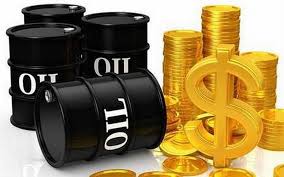Oil prices saw a resurgence on Thursday, bouncing back from a three-day decline, driven by anticipation that lower price levels might prompt the United States, the world’s largest crude consumer, to initiate replenishment of its strategic reserve. This expectation acted as a stabilizing factor, lending support to prices after a recent dip.
Despite Wednesday’s over 3% decline, which marked a seven-week low, the market rallied as investors speculated on the potential for the U.S. Federal Reserve to maintain steady interest rates. Such a move could potentially curb economic growth for the year, subsequently limiting oil demand increases.
Adding pressure to crude prices was an unexpected rise in U.S. crude inventories and indications of an impending ceasefire between Israel and Hamas, which promised to alleviate concerns over Middle East supply disruptions.
Brent crude futures for July experienced an uptick of 58 cents, or 0.7%, reaching $84.02 a barrel by 0633 GMT on Thursday. Similarly, U.S. West Texas Intermediate (WTI) crude for June climbed 53 cents, or 0.7%, to $79.53 a barrel.
Hiroyuki Kikukawa, president of NS Trading, a unit of Nissan Securities, highlighted the market’s response to speculation that the U.S. would take action to fortify its strategic reserves if WTI prices fell below $79. The U.S. government has expressed its intention to replenish the Strategic Petroleum Reserve (SPR) following a significant sale from the emergency stockpile in 2022, aiming to acquire oil at or below $79 a barrel.
As the dynamics of global oil markets continue to evolve amidst geopolitical tensions and economic considerations, investors remain vigilant for signals of supply and demand shifts, which could significantly influence price trajectories in the near term.














